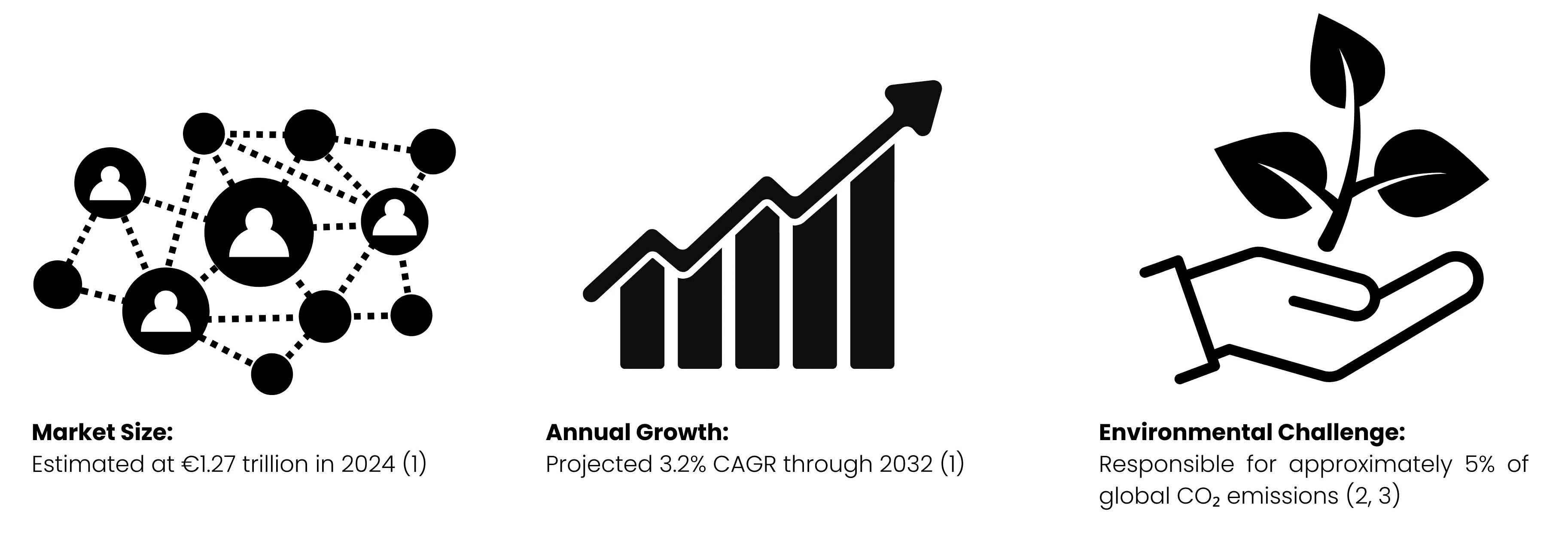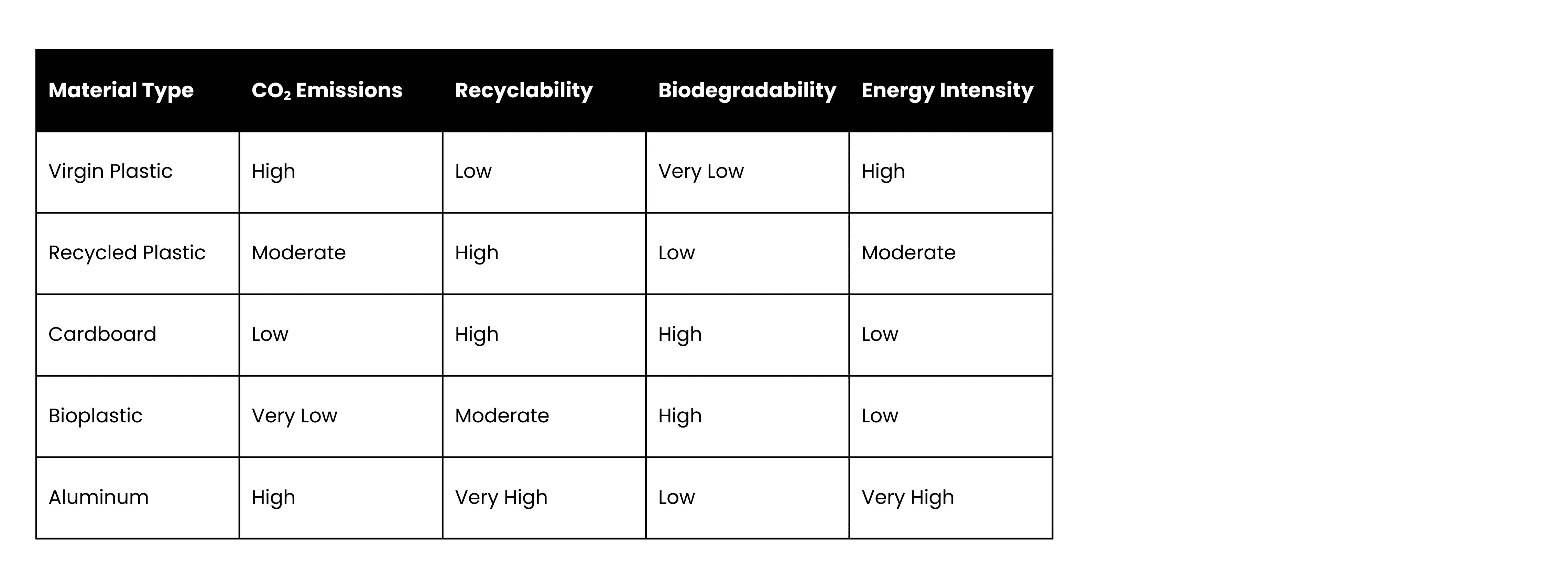Nachrichten
Das Verständnis des ökologischen Fußabdrucks von Verpackungen: Über oberflächliche Einblicke hinaus
Verpackung ist ein kritischer Knotenpunkt von ökologischer Verantwortung, technologischer Innovation und wirtschaftlicher Strategie. Unsere eingehende Analyse offenbart die facettenreichen ökologischen Auswirkungen von Verpackungsentscheidungen und bietet umfassende Lösungen für nachhaltige Geschäftspraktiken.
Die ganzheitlichen CO₂-Chroniken: Entschlüsselung der ökologischen Komplexität von Verpackungen
Globale Verpackungslandschaft
Die globale Verpackungsindustrie hat eine enorme ökologische Bedeutung:

Detaillierte Analyse des Kohlenstofffußabdrucks
Material-spezifische ökologische Auswirkungen
Traditionelle Kunststoffe
CO2-Emissionen: 2,7 kg CO₂ pro kg Material
Persistenz: Kann bis zu 450 Jahre zur Zersetzung benötigen
Generierung von Mikroplastik: Bedeutende ökologische Bedrohung für Ökosysteme
Karton- und papierbasierte Verpackungen
CO2-Emissionen: 1,1 kg CO₂ pro kg für neues Material; erheblich niedriger (~0,3–0,8 kg CO₂ pro kg) für Recyclingmaterial.
Potenzial aus erneuerbaren Quellen: Höhere Recyclingfähigkeit
Auswirkungen des Waldmanagements: Kritische Abhängigkeit von nachhaltigen Forstpraktiken
Aluminiumverpackungen
CO2-Emissionen: 1,5 kg CO₂ pro kg für neues Aluminium; erheblich niedriger (~0,5–1 kg CO₂ pro kg) für recyceltes Aluminium aufgrund reduzierter Energieanforderungen.
Recycling-Effizienz: Nahezu 75% des jemals produzierten Aluminiums sind noch in Gebrauch
Energieintensität: Die Aluminiumproduktion ist energieintensiv und benötigt 14–16 kWh pro kg für die Neuproduktion. Recycling benötigt jedoch 95 % weniger Energie, was es zu einem der nachhaltigsten Materialien bei Recycling macht.
Fortschrittliche LCA-gesteuerte Verpackungslösungen
Kreislaufwirtschafts-Verpackungsstrategien

Innovative Materialtechnologien
1. Biomaterial-Innovationen
Maisbasierte Verpackungen
Biologisch abbaubar innerhalb von 180 Tagen
Reduzierter Erdölbedarf
Niedrigere Kohlenstoffintensität
Schutzmaterialien aus Pilzen
Vollständig kompostierbar
Aus landwirtschaftlichen Abfällen gezüchtet
Minimaler Energieverbrauch in der Produktion
Verpackungen aus Algen und Seetang
Abfallfreies Konzept
Potenzieller negativer Kohlenstofffußabdruck
Unterstützt die Wiederherstellung mariner Ökosysteme
2. Fortschrittliche Recyclingtechnologien
Chemisches Recycling
Zerlegt Polymere bis auf molekulare Ebene
Ermöglicht unendliches Recycling
Reduziert den Verbrauch von Neumaterialien
Closed-Loop-Verpackungssysteme
Vollständige Materialrückgewinnung
Minimale Abfallproduktion
Reduziert den gesamten Kohlenstofffußabdruck
Strategien für technologische Interventionen
Digitale Verfolgung und Optimierung
Blockchain-Verpackungsnachverfolgbarkeit
Echtzeit-Tracking des Kohlenstofffußabdrucks
Transparente Überwachung der Lieferkette
Verifizierbare Nachhaltigkeitsnachweise
KI-gestütztes Verpackungsdesign
Optimierte Materialauswahl
Vorausschauende Lebenszyklusanalysen
Minimale Abfallkonfiguration
Regulatorische Landschaft und Zukunftsprognosen
EU-Verpackungsrichtlinien
2030-Ziele:
65% Recycling von Verpackungsabfällen
Deutliche Reduzierung von Einwegkunststoffen
Verpflichtende Anforderungen an Recyclinganteile
Kennzahlen zur Transformation der Branche
Investitionen in nachhaltige Verpackungen:
Prognostizierte 350 Milliarden USD bis 2025 (4)
23% jährliches Wachstum bei grünen Verpackungstechnologien (4)
Vergleichende Analyse der ökologischen Auswirkungen
Vergleich des Lebenszyklus von Verpackungsmaterialien

CO₂-Emissionsrechner für Verpackungsentscheidungen
Expertise und Zukunftsvision
"Nachhaltige Verpackung ist keine Kosten – es ist eine Investition in die Zukunft unseres Planeten und die Widerstandsfähigkeit von Unternehmen." - Dr. Elena Rodriguez, Global Sustainability Research Institute
Kontaktieren Sie uns für weitere Informationen über eine schnelle, zuverlässige und kosteneffiziente Lebenszyklusbewertung, einschließlich der Verpackung Ihrer Produkte.
Emissionsfaktoren, die für die Berechnung verwendet wurden:
Materialien (kg CO2 pro kg)
Kunststoff: 2.7
Karton: 1.1
Aluminium: 11.5
Glas: 1.25
Bioplastik: 1.5
Papier: 0.9
Transport (kg CO2 pro Ton-Kilometer)
Lkw: 0.1
Schiff: 0.015
Zug: 0.025
Flugzeug: 0.5
Ressourcen:
https://www.towardspackaging.com/insights/packaging-market-sizing
https://en.wikipedia.org/w/index.php?title=Environmental_impact_of_paper
https://www.grandviewresearch.com/industry-analysis/green-packaging-market









